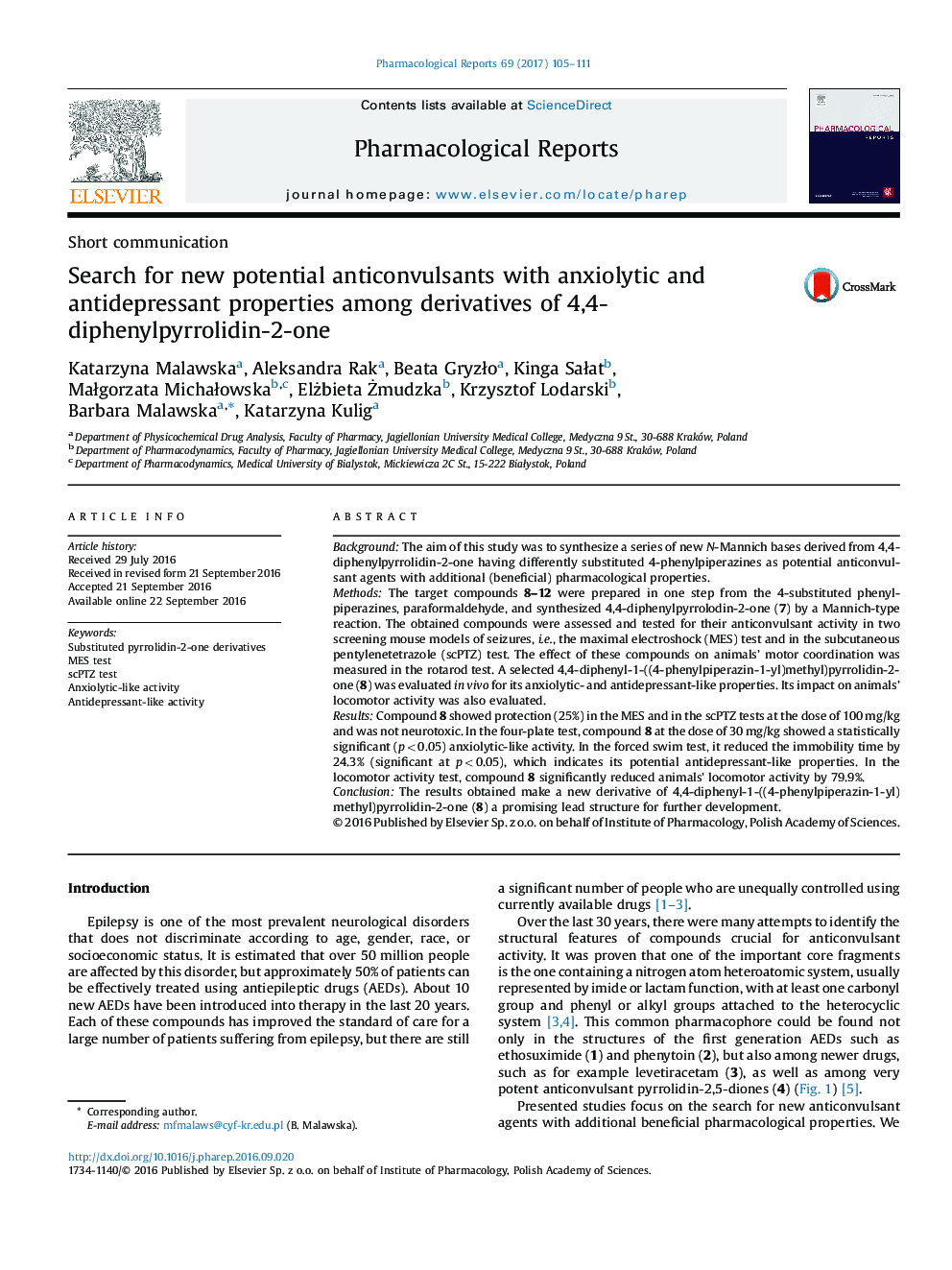| Article ID | Journal | Published Year | Pages | File Type |
|---|---|---|---|---|
| 5515117 | Pharmacological Reports | 2017 | 7 Pages |
BackgroundThe aim of this study was to synthesize a series of new N-Mannich bases derived from 4,4-diphenylpyrrolidin-2-one having differently substituted 4-phenylpiperazines as potential anticonvulsant agents with additional (beneficial) pharmacological properties.MethodsThe target compounds 8-12 were prepared in one step from the 4-substituted phenylpiperazines, paraformaldehyde, and synthesized 4,4-diphenylpyrrolodin-2-one (7) by a Mannich-type reaction. The obtained compounds were assessed and tested for their anticonvulsant activity in two screening mouse models of seizures, i.e., the maximal electroshock (MES) test and in the subcutaneous pentylenetetrazole (scPTZ) test. The effect of these compounds on animals' motor coordination was measured in the rotarod test. A selected 4,4-diphenyl-1-((4-phenylpiperazin-1-yl)methyl)pyrrolidin-2-one (8) was evaluated in vivo for its anxiolytic- and antidepressant-like properties. Its impact on animals' locomotor activity was also evaluated.ResultsCompound 8 showed protection (25%) in the MES and in the scPTZ tests at the dose of 100 mg/kg and was not neurotoxic. In the four-plate test, compound 8 at the dose of 30 mg/kg showed a statistically significant (p < 0.05) anxiolytic-like activity. In the forced swim test, it reduced the immobility time by 24.3% (significant at p < 0.05), which indicates its potential antidepressant-like properties. In the locomotor activity test, compound 8 significantly reduced animals' locomotor activity by 79.9%.ConclusionThe results obtained make a new derivative of 4,4-diphenyl-1-((4-phenylpiperazin-1-yl)methyl)pyrrolidin-2-one (8) a promising lead structure for further development.
